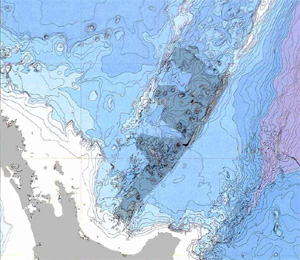Mining company seeks two more Kermadec deepsea
prospecting licences
The Australian mining company Neptune Resources Ltd has submitted applications
to the Crown Minerals Division of the Ministry of Economic Development for two additional
prospecting licences covering an area of 90,000 sq km.
The area is further northeast from the location of the prospecting licence issued
to the company in 2002 covering an area of 33,000 sq km on the southern
Kermadec Ridge.
The company says that rock samples from the seabed usually had a higher metal content than
deposits on land. Initial prospecting discovered high levels of metals at the Brothers seamount
volcano on the Kermadec Ridge at a depth of 1850m below sea level.
Neptune prospecting has been facilitated by the lack of regulation inhibiting Crown
Mineral's rush to establish seabed mining in New Zealand's deep ocean territory. The
company has also been assisted by the two government Crown Research institutes doing research
on the Kermadec Ridge.
The National Institute of Water and Atmospheric Research (NIWA) has conducted surveys of
the seafloor, and Geological and Nuclear Sciences (GNS) has been sampling various seamounts
from a series of submersible dives.
Surface mining of the deep seabed will be blind, and damage caused by it will be indiscriminate,
catastrophic and long-term. This type of mining will alter geochemistry and potentially
cause the extinction of unique microbial flora.
There is a need to protect flora and fauna of the seabed because so much of it is unknown.
The real environmental impact of deep seabed mining will never be known, because a value
cannot be placed on species that have not yet been discovered, and ecosystems that are
undefined, that will inevitably be damaged or possibly destroyed.
New Zealand is proceeding blindly into the first deepsea mining in the world, with unproven
extraction methods, and consequently an unknown return from operations, and undefined gain
that is likely to permanently affect and destroy natural resources.
|



